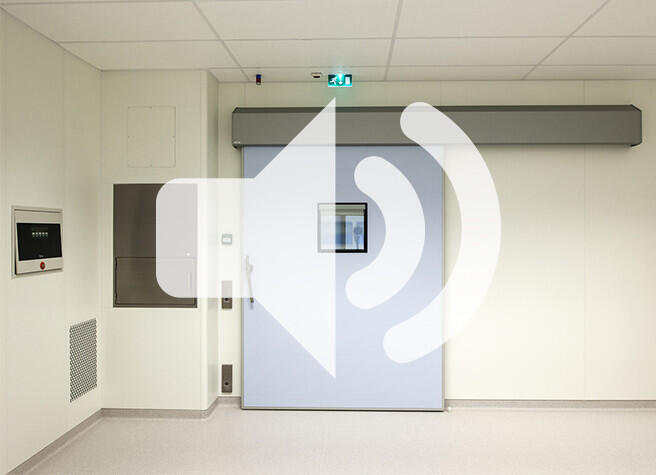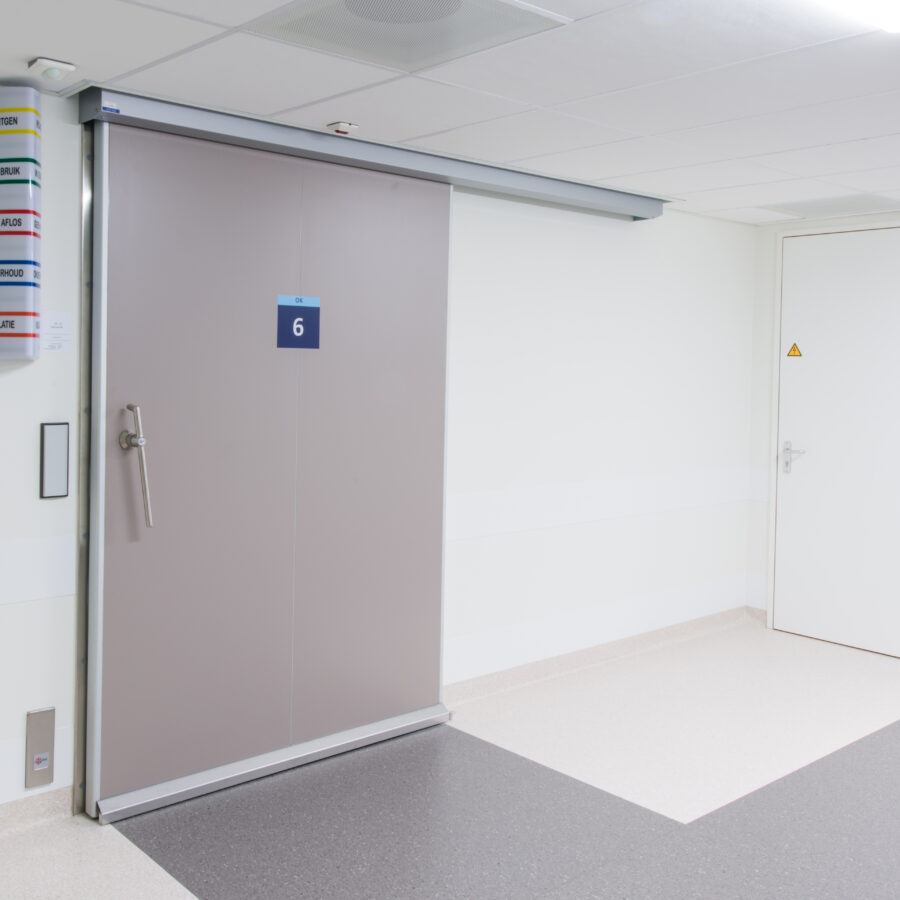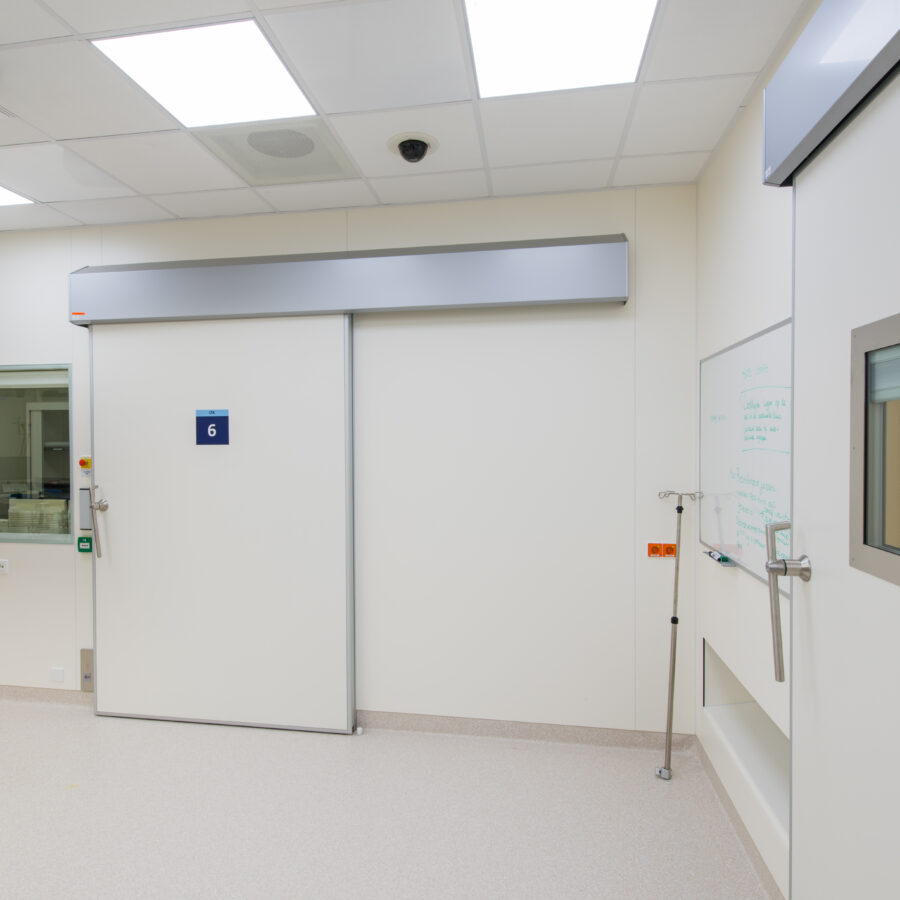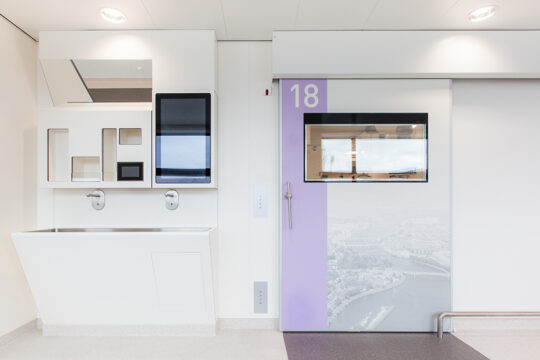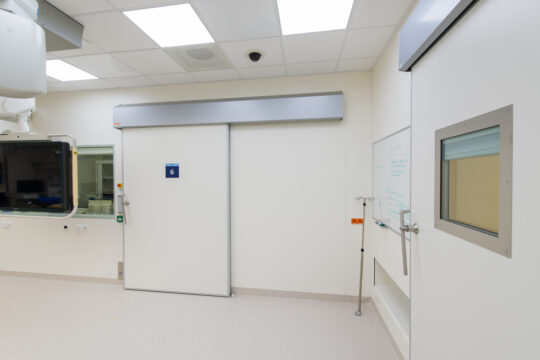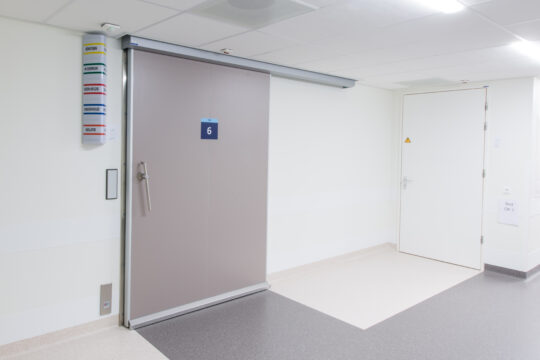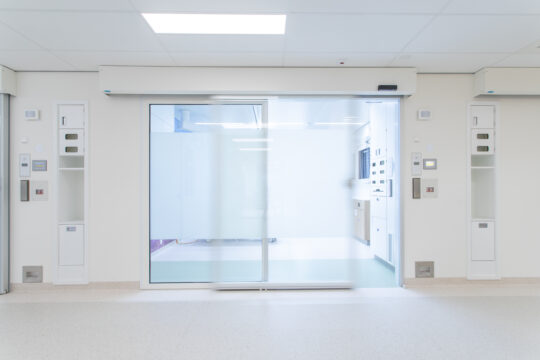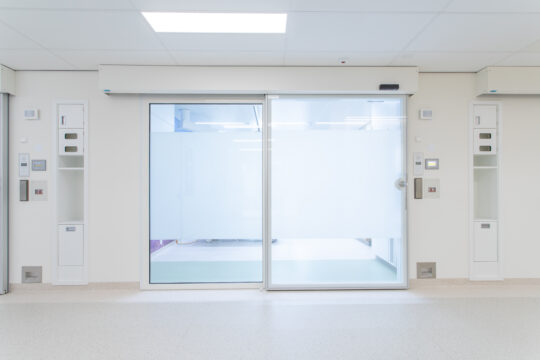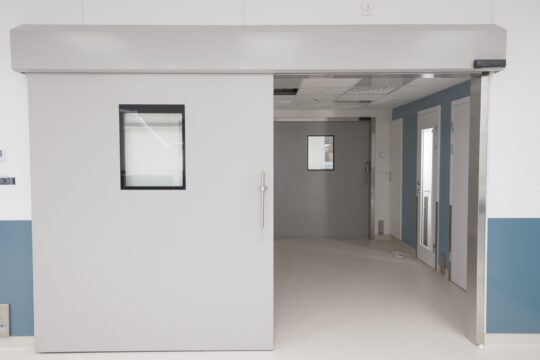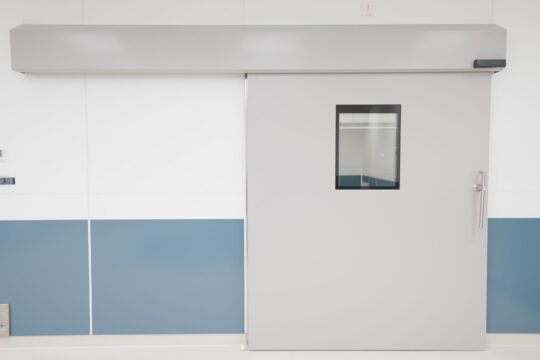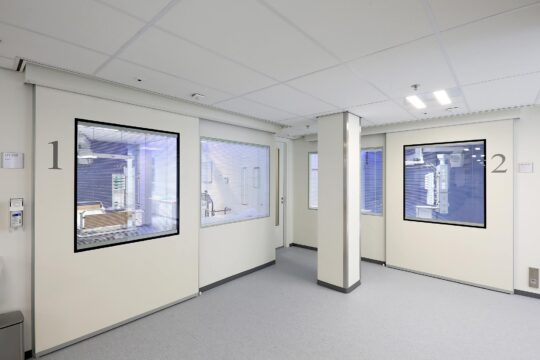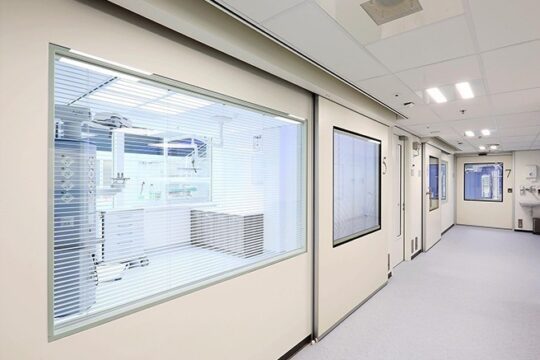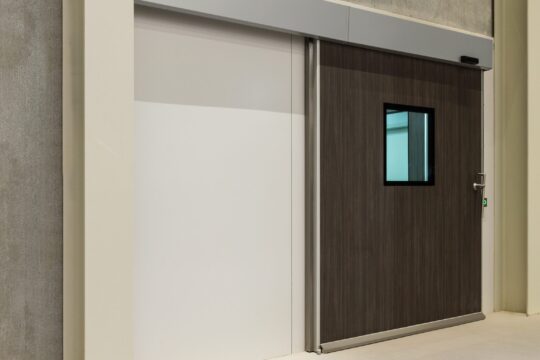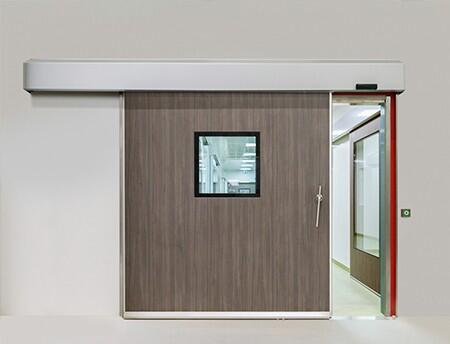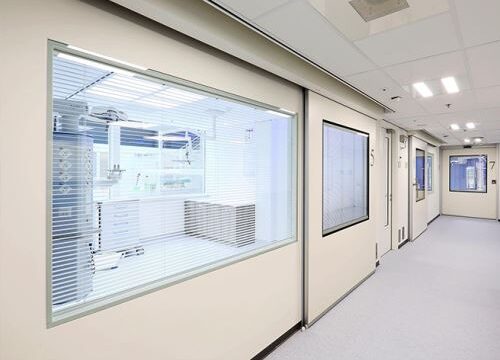Information
Noise insulation
Noise insulation is the difference between the noise level in room 1 and room 2. The value that is linked to this reflects the extent to which a material is capable of impeding noise. Various terms are used for this:
Rw-value:
This is the value of de noise insulation of the doorblade. The measurements are only conducted on the body of the door in a static condition, without possible rim and sealing rubbers. The difference in the noise level between the two rooms separated by the door is measured. This method is in conformity with ISO10140-2.
Rw,p-value:
This is a practical value measured in a laboratory. The measurements are conducted on the sliding door construction in operative condition. This pertains to the entire door, including rubbers and rim. In operative condition means that the door will be opened and closed at least five times immediately prior to the test.
Rw,r-value:
This is the practical noice insulation value of the applied situation. This refers to the operational door at the location of the application. The difference with the rw,p-value is dependent upon the quality of installation and adjusting of the door and frame.
Lµ-value:
This is not a sliding door property. This reflects the noise insulation in the applied situation and is dependent upon the volume and echo of the reception area. The Lµ-value is dependent upon the size and furnishing of the reception area. The use of hard materials in the furnishing creates a higher volume and echo than the use of soft materials.
Preferences noise-reduction
In order to express noise insulation, the airborne noise level difference is used: DnT,A. The DnT,A- value is expressed in decibel (dB). The DnT,A-value can only be realised in practice, because the influence factors which can negatively influence the isolation of the noise have to be taken into account.
The Dutch government has set up the following thresholds noise levels for outside noise:
| Residential area or area in which people sleep | Threshold for road or rail noise | Threshold for industrial noise |
|---|---|---|
| Residential area | 33 dB | 35 dB(A) |
| Area in which people sleep | 28 dB | 30 dB(A) |
For the noise level between different rooms there are no legal requirements. However, there are certainly preferences with respect to noise-reduction of various types of rooms.
Consider, for example:
- Sound-sensitive rooms with increased privacy, such as treatment rooms, research areas and consultation rooms.
- Sound-sensitive rooms such as patient rooms
- Less or moderately sound-sensitive rooms such as meeting rooms, work areas or office spaces.
- Non-sound sensitive rooms such as storage areas, technical rooms and traffic spaces.
We are happy to advise you as to the desirable noise insulation values in your situation.


